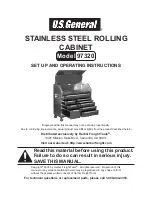
DL4300 Appliance
Using PowerShell scripts in Rapid Recovery
504
Extending Rapid Recovery jobs using
scripting
Rapid Recovery enables administrators to automate the administration and management of resources at certain
occurrences through the execution of commands and scripts. The Rapid Recovery software supports the use of
PowerShell scripting for Windows and Bourne Shell scripting for Linux.
Core jobs are automatically created whenever you initiate operations on the Rapid Recovery Core such as
replication, virtual export, or a backup snapshot. You can extend these jobs by running a script before it or after it.
These are known as pre and post scripts.
This section describes the scripts that can be used by administrators at designated occurrences in Rapid
Recovery for Windows and Linux.
CAUTION:
The sample PowerShell and Bourne scripts provided in this document will function when run as
designed by qualified administrators. Take precautions when modifying functioning scripts to retain working
versions. Any modifications to the script samples included here, or any scripts you create, are considered
customization, which is not typically covered by Dell Support.
Using PowerShell scripts in Rapid
Recovery
Windows PowerShell is a Microsoft .NET Framework-connected environment designed for administrative
automation. Rapid Recovery includes comprehensive client software development kits (SDKs) for PowerShell
scripting that lets administrative users run user-provided PowerShell scripts at designated occurrences; for
example, before or after a snapshot, attachability and mountability checks, and so on. Administrators can run
scripts from both the Rapid Recovery Core and the protected machine. Scripts can accept parameters, and the
output of a script is written to Core and protected machine log files.
NOTE:
For nightly jobs, preserve one script file and the JobType input parameter to distinguish between
nightly jobs.
Script files are located in the
%ALLUSERSPROFILE%\AppRecovery\Scripts
folder.
•
In Windows 7, the path to locate the %ALLUSERSPROFILE% folder is:
C:\ProgramData
.
•
In Windows 2003, the path to locate the folder is:
Documents and Settings\All Users\Application Data\
.
NOTE:
Windows PowerShell is required and must be installed and configured before running Rapid
Recovery scripts.
For more information on how using PowerShell scripts see
,
















































